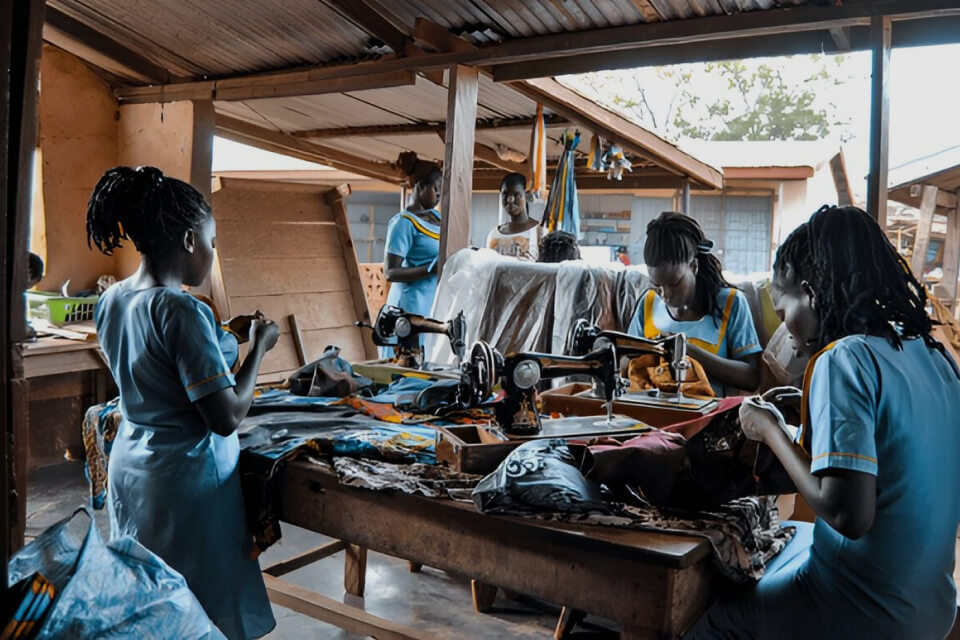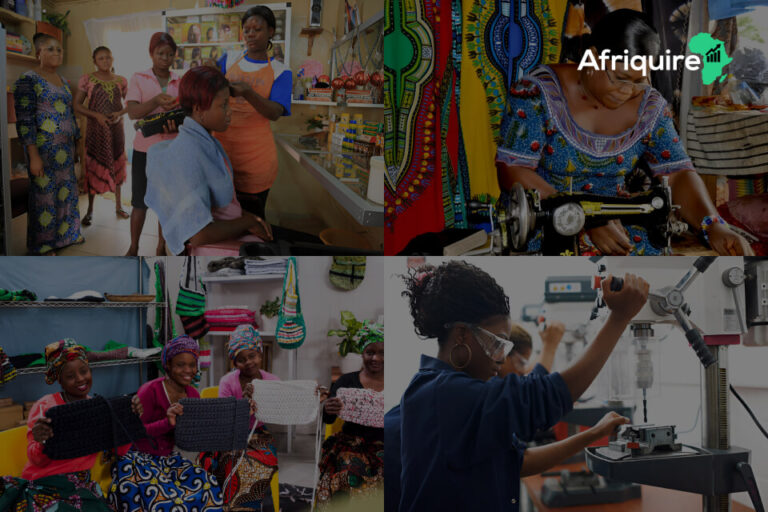Introduction
Across Africa, there is no doubt that we have several successful microfinance initiatives that have helped change the lives of many people. Microfinance gives small loans and other financial help to people who do not have access to regular banks. This support allows individuals, especially women and small business owners, to grow their businesses and take care of their families.
In this article, we will explain what microfinance is and why it matters. We will also look at real-life examples to see how it is helping people in Africa. These examples help us better understand the role of microfinance in African SME growth and its growing impact on African social enterprises.
Definition and Scope of Microfinance in Africa
Microfinance means offering small loans, savings accounts, and other financial tools to people or small businesses that banks usually ignore.
In many parts of Africa, people live in rural areas or do not have steady jobs. Because of this, they may not have the documents banks ask for, like credit records or collateral. That is where microfinance comes in. It helps people who are often left out by big banks.
Most times, women and young people benefit the most. They use these small loans to start businesses, grow farms, or open shops. Some microfinance programs also include savings plans that help people build money for the future.
Importance of Microfinance in Poverty Reduction and Financial Inclusion
Microfinance is not just about giving loans. It plays a big part in fighting poverty and including more people in the financial system.
When someone gets access to even a small loan, they can begin earning money, improving their businesses, and supporting their families. This builds confidence and helps them become more self-reliant. It also gives them a better chance at breaking out of the cycle of poverty.
At the same time, microfinance encourages people to try new business ideas. This boost in small businesses adds to the economy. That is why the role of microfinance in African SME growth is so important. Small businesses make up a big part of Africa’s economy, and microfinance helps them grow and hire more people.
Overview of the Case Study Approach
One of the best ways to understand microfinance is to look at case studies. These are real stories from people and organizations that show how microfinance works in everyday life.
Case studies show how microfinance groups face challenges and how they solve them. They also show how these groups help people who are trying to do more than just make money. These include African social enterprises that focus on helping others through projects in health, education, or clean water.
By looking at these case studies, we learn which microfinance ideas work best. Policymakers, business leaders, and investors can then use this knowledge to support more people and improve more communities.
Introduction to Notable Microfinance Initiatives
In many parts of Africa, getting a loan from a regular bank can be hard, especially for young business owners, women, and people living in rural areas. That’s where successful microfinance initiatives come in. These programs give small loans and other financial services to people who usually don’t have access to banks.
Let’s look at some powerful microfinance institutions, where they work, who they help, and the services they offer.
Brief Profiles of Standout Microfinance Institutions (MFIs)
Across Africa, many microfinance organizations have done amazing work. For example, Faulu Microfinance Bank in Kenya has helped small business owners like Phyllis grow their businesses. With a simple loan, Phyllis was able to expand her cosmetics shop and reach more customers.
Another great example is Microfinancing Partners in Africa. They work in several African countries and run unique programs like the Piglet and Cow Projects. These give families animals they can raise and sell, helping them earn steady incomes.
In South Africa, the Small Enterprise Foundation stands out for its focus on helping rural women. It has strong repayment rates and helps women start or grow their businesses.
Then, there’s the European Investment Bank, which works with different microfinance groups across East Africa. Thanks to their support, many women and young people in countries like Kenya and Uganda now have access to loans and business support
Geographical Spread and Target Populations
These microfinance initiatives are spread across many African regions including East, West, and Southern Africa. Each program is designed to reach people who don’t have access to banks, especially in rural areas.
Many borrowers are women because they often face more challenges in getting financial help. These programs give them a chance to start small businesses, support their families, and become more financially independent.
Young entrepreneurs are also a big focus. They have fresh ideas but usually lack the money to bring them to life. By providing support, microfinance helps them build strong businesses and contribute to their communities. For example, in places like Rwanda and Tanzania, programs reach out to youth, market sellers, farmers, and even city-based small business owners.
Types of Services Offered (loans, savings, insurance)
Most microfinance institutions provide small loans. These are used to start or grow a business. One of the best things about these loans is that they often don’t need any security or collateral, so people who are poor can still qualify.
But that’s not all. Many programs offer savings accounts too. These help people keep their money safe and plan for things like school fees or emergencies. Some institutions also provide insurance. This protects families when things go wrong, like during a health crisis or crop failure.
On top of this, there are also programs that teach people how to manage money. Some even give farming tools or clean water solutions. For instance, Microfinancing Partners in Africa not only gives loans but also teaches families how to use their resources wisely so they can grow stronger over time.

Success Factors and Strategies Employed
Successful microfinance initiatives have changed lives across Africa. They have helped many people, especially women and young people, start small businesses, earn a steady income, and support their families. Let’s explore some of the key strategies behind their success and why the role of microfinance in African SME growth and its impact on African social enterprises is so important.
Community-Based Lending Models
One of the biggest reasons microfinance works well is because of community-based lending. Through these models, people from the same area come together to save money and give small loans to each other. A great example is when savings groups are formed in villages or towns. Members put money into a group fund and then borrow from it when they need help.
Because everyone knows each other, they trust the group. If someone cannot repay their loan, other members step in to support them. This builds teamwork and encourages people to repay on time.
Over time, many women’s groups and youth cooperatives have used these systems to start small businesses like selling food, farming, tailoring, or running kiosks. These activities create jobs and help families earn more money.
Clearly, working together in communities is one of the most powerful strategies behind successful microfinance initiatives.
Use of Mobile Banking and Digital Platforms
Next, technology is playing a big role. Many people in Africa now use mobile phones to manage their money. Thanks to mobile banking, it’s easier than ever to save, send, and borrow money.
For example, instead of walking long distances to a bank, people can now apply for loans or check their savings right from their phones. This is a big help, especially in rural areas where banks are far away. Mobile apps also send reminders and help people stay on track with payments.
As a result, more people, even those with low incomes, are now using financial services. Digital platforms are opening doors and increasing the impact of microfinance on African social enterprises and families alike.
Strong Governance and Transparent Operations
Good leadership is also a major part of any successful microfinance programme. These organisations must be honest, fair, and clear in how they work. When people know their money is safe and the rules are fair, they are more likely to trust and use these services.
Many microfinance banks train their staff, track loans properly, and carry out regular checks to prevent fraud. They also keep their clients informed by using simple words, holding meetings, and giving updates on how the money is used.
Strong governance helps build confidence. It also attracts more investors, which means these organisations can grow and reach more people in need.
Partnerships with Local and International Stakeholders
Finally, strong partnerships are another reason why microfinance efforts succeed. Local governments, NGOs, global donors, and private companies often work together with microfinance organisations. These partners provide funding, training, and support.
Because of these partnerships, clients sometimes receive extra services, like health support or solar power loans. By working together, microfinance providers learn new ideas, share risks, and offer better solutions to their customers.
Partnerships are helping these initiatives grow faster, reach more people, and increase the role of microfinance in African SME growth.
Impact on Local Communities and Economies
Successful microfinance initiatives have changed the lives of many people across Africa. They offer small loans and financial support to people who usually cannot get help from regular banks. As a result, many individuals have been able to start or grow small businesses in their communities. This support has helped reduce poverty and improve daily life for millions. Even more, microfinance strengthens African social enterprises and plays a big role in growing SMEs across the continent.
Growth of Small Businesses and Informal Sector
To begin with, microfinance has been a big help for people running small or informal businesses. These are the tiny shops, food stands, tailors, and roadside repair services we see every day. Many of them don’t qualify for loans from regular banks because they don’t have the right documents or business history. That’s where microfinance steps in.
With small loans, business owners can buy more goods, fix tools, or expand their services. This means they can serve more customers and make more money.
Also, when businesses grow, they hire more people, which helps reduce unemployment. Some microfinance programs even encourage group lending. This means people borrow together and support each other. As a result, trust and teamwork grow in the community, and everyone benefits.
Improvement in Household Income and Education
When people earn more from their businesses, their families also feel the benefits. With better income, families can buy more food, pay for medical care, and send their children to school. This is one of the biggest wins of successful microfinance initiatives.
Even better, many of these programs teach families how to manage money. They learn how to budget, save, and plan for the future. Over time, this knowledge helps families break out of poverty. They don’t just survive — they start to thrive. This means brighter futures for children and stronger communities overall.
Empowerment of Women and Marginalized Groups
One of the most powerful effects of microfinance is how it empowers women and people who often get left out. In many parts of Africa, women find it hard to access money or make decisions about finances. Microfinance gives them a chance to take control.
With access to loans, many women start small businesses. Some sell clothes, others cook and sell food, and some make crafts or provide services. Whatever the business, the impact is big. These women can support their families, build confidence, and earn respect in their communities.
Also, microfinance institutions often create loan options that are friendly to people with special needs or those from poor backgrounds. These tools make sure more people can take part in building a better life.
Spillover Effects on Local Economies
When many small businesses grow in a community, the entire area feels the change. Local markets become more active. There’s more buying, selling, and exchanging of goods and services. This brings more jobs and often leads to better wages.
Eventually, some small businesses grow enough to become more formal. That means they start paying taxes, using proper business records, and even joining local business groups. When this happens, the government gets more funds to improve roads, schools, and other public services.
In short, the success of microfinance spreads beyond just one person. It lifts up whole communities and keeps the local economy moving forward.

Lessons Learned from Successful Cases
Microfinance initiatives in Africa show how small loans and strong community support can lead to big changes. While large banks often ignore small businesses, microfinance steps in to help people grow. Now, let’s explore what makes these initiatives work so well, the lessons they teach us, and how they keep getting better.
Key Drivers of Long-Term Sustainability
First of all, financial education is one of the biggest reasons microfinance works. These programmes don’t just give out money. Instead, they teach people, especially women and young business owners, how to plan, save, and grow. In countries like Kenya and Nigeria, some banks have become successful by focusing on this kind of training.
Next, microfinance loans are not all the same. They are often flexible and created to match what each person needs. For example, some loans are made for farmers, while others are better for traders or shop owners. In Ghana, some microfinance groups take time to understand what people really need before offering loans.
Also, working in groups is another big factor. Many programmes ask people to form groups and borrow together. This helps them support one another and stay committed to repaying their loans.
Most importantly, technology is now helping microfinance reach more people. With mobile money and simple phone tools like text messages, people living in villages far away can now apply for loans, send payments, and receive updates. This makes everything faster, easier, and safer.
Challenges Overcome and How They were Addressed
Of course, microfinance is not without problems. One of the main issues is when people cannot repay their loans. This may happen because of sickness or bad harvests. However, strong programmes have found ways to help. Some offer flexible payment plans or give people more time to pay when they are facing problems.
Another major challenge is the cost of running these programmes. Reaching people in rural areas and handling many small loans can be expensive. To fix this, many successful microfinance programmes now use local agents who live in the same areas as the clients. This saves money and builds trust.
There have also been problems with unclear rules and trust. Sometimes, both borrowers and lenders do not know their rights or how things should work. To solve this, the best microfinance organisations work closely with the government and stay open about their services. That way, everyone feels safe and included.
Role of Continuous Learning and Adaptation
One reason successful microfinance initiatives keep growing is that they never stop learning. They always ask clients for feedback. They also test new ideas before using them on a bigger scale. This helps them know what works best and what needs to change.
Training staff is another part of this learning. When workers understand their roles better, they can help clients even more. Some microfinance groups also offer business training along with loans. For example, farmers may learn how to improve their crops while using the money wisely.
Microfinance groups also team up with others, such as charities, banks, and tech companies, to do more and reach more people. These partnerships help bring in new ideas, tools, and support.
As these programmes improve, they boost the role of microfinance in African SME growth. Many small businesses are growing because of microfinance, and this helps the economy grow too. The impact of microfinance on African social enterprises is also clear. These businesses help their communities, and microfinance helps them thrive.
Replicating Success: Key Takeaways
Microfinance programs help poor and rural people grow small businesses and improve their income. But if we want to bring these programs to more places, we need to do it with care. We must know what works, what people need, and how to support them. When done right, microfinance plays a big role in helping African small businesses grow and supporting social enterprises that serve communities.
Essential Conditions for Replicating Models in New Regions
To start with, understanding local people is very important. You need good data and a clear picture of who you are helping. For example, many programs work with women, farmers, and small shop owners. They study what these people need and then offer loans and services that match.
Also, using mobile phones to send and receive money helps a lot. It’s cheaper and faster, especially for people living far from the city. But more than that, microfinance institutions must earn people’s trust. They do this by being open about loan terms and making sure repayment is fair and easy to understand.
Next, strong partnerships make a big difference. When microfinance groups work with local leaders, churches, or NGOs, they can reach more people and offer better support. Giving people training in money management or small business skills also helps them succeed.
And finally, the program must fit the culture. What works in one place might not work in another. Being flexible and learning from each community helps the program stay useful and grow.
Policy Recommendations for Scaling Microfinance
Now, to make microfinance work across the continent, governments need to step in. They must create rules that protect both borrowers and lenders. This makes it easier for microfinance groups to lend responsibly. For instance, allowing these groups to accept savings helps them grow without always needing outside help.
Moreover, rules should support new ideas, like using mobile apps or digital money to reach more people. These tools cut costs and keep things safe. Governments should also help microfinance groups get better through training and building stronger systems, especially in rural areas where costs are high.
Giving tax breaks or setting up credit bureaus helps too. When risks are lower, loans become cheaper. And when people know their payment history matters, they are more likely to repay. On top of this, collecting and sharing data helps everyone see what’s working and what needs to change. This makes microfinance more powerful in helping African businesses grow.
The Importance of Tailoring to Local Needs and Contexts
One of the biggest lessons from successful microfinance initiatives is that every place is different. Africa is full of many cultures and lifestyles. So, programs must match the way people live and earn money. That means adjusting loan sizes, repayment times, and even what people offer as collateral.
When microfinance groups really listen to the people they serve, the impact is bigger. Some groups even give things like cows or chickens instead of cash. These “living loans” help farmers earn money and feed their families.
By putting people first and respecting how they live, microfinance becomes more than just lending. It builds stronger communities, supports local business ideas, and helps people feel in charge of their futures. That’s how it plays a strong role in supporting African social enterprises and helping the economy grow from the ground up.

Frequently Asked Questions (FAQs)
1. What are successful microfinance initiatives?
They are programmes providing small loans and financial services to people excluded from traditional banking, helping them start or grow businesses.
2. How do microfinance initiatives support African SMEs?
By offering affordable credit, savings options, and financial education, enabling small businesses to expand and create jobs.
3. What impact do microfinance programmes have on local communities?
They improve incomes, empower women, create employment, and encourage entrepreneurship, boosting overall economic development.
4. What lessons have emerged from successful microfinance cases?
Sustainability, trust-building, transparency, and adapting services to local needs are key for success.
5. How can microfinance impact African social enterprises?
It provides critical funds that allow social enterprises to scale their impact on health, education, and environment sectors.
Conclusion
Successful microfinance initiatives play a vital role in supporting small businesses and empowering communities across Africa. By providing accessible financial services and investing in education, these programmes contribute significantly to the role of microfinance in African SME growth. Their impact stretches beyond individual success, strengthening African social enterprises and fostering inclusive economic development.
Learning from proven success factors and strategies allows replication of these initiatives in new regions, expanding their benefits further. Ultimately, microfinance holds great promise to uplift millions, turning financial exclusion into opportunity and hope for a better future.



